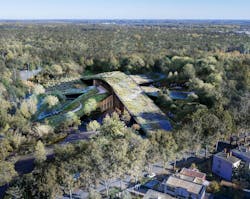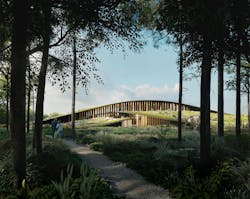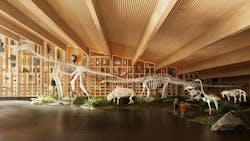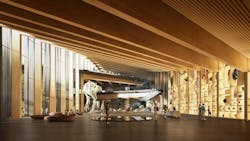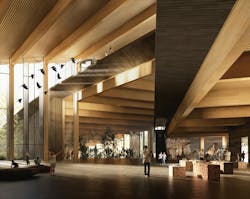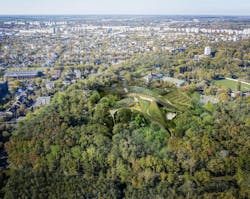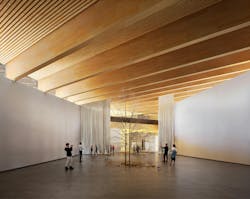BIG’s new Hungarian Natural History Museum will feature sloping green roofs that rise from the forest floor
Design firm Bjarke Ingels Group (BIG) recently won an international competition to design the home of the new Hungarian Natural History Museum. The museum will be located in the centuries-old Great Forest in Debrecen, Hungary, the country’s second largest city after Budapest.
The design consists of three overlapping landscaped volumes that gently rise from the forest floor. The museum will be partially sunken in the ground, so that it blends with the surrounding park and minimizes its footprint. Planted with native species, the sloping green roofs will offer habitats for local flora and fauna.
“Our design is conceived as an intersection of paths and lineages. Intersecting ribbons of landscape overlap to produce a series of niches and habitats, halls and galleries, blending the inside and the outside,” Bjarke Ingels, founder and creative director, BIG, said in a statement. “The result is a manmade hill in a forest clearing.”
Visitors will enjoy views of the city from the sloping roofscape, as well as open plazas, winding forest paths, and framed views through and over the building. A generous southern plaza will serve as a meeting area for community and museum activities.
Measuring 23,000 square meters (247,567 sf), the new museum, which will replace the existing facility, will house permanent and temporary exhibition halls, educational and research facilities, public amenities, and back-of-house spaces.
Inside, the reception hall will offer views into the surrounding exhibition wings organized radially: five wings for permanent galleries and one for temporary shows and public programs. Above, a library and restaurant will provide views of the forest. And below, a learning hub will host workshops, play spaces, and research labs for students, families, and staff.
With a mass timber structure, the museum will feature a façade made of locally sourced charred timber panels. The museum’s on-site energy systems, such as geothermal loops and photovoltaic panels, will ensure a stable indoor climate year-round.
Commissioned by the museum and Hungary’s Ministry of Culture and Innovation, the new museum supports the government’s plan to establish Debrecen as a regional hub for education and culture by 2030.
Project team: Hungarian Natural History Museum (owner), DIF (Debrecen Infrastructure Development) (developer), BIG (design architect), Vikár és Lukács Építészstúdió (architect of record), TYPSA/107.Studio (MEP engineer and sustainability), TYPSA/MC2 (general contractor).
